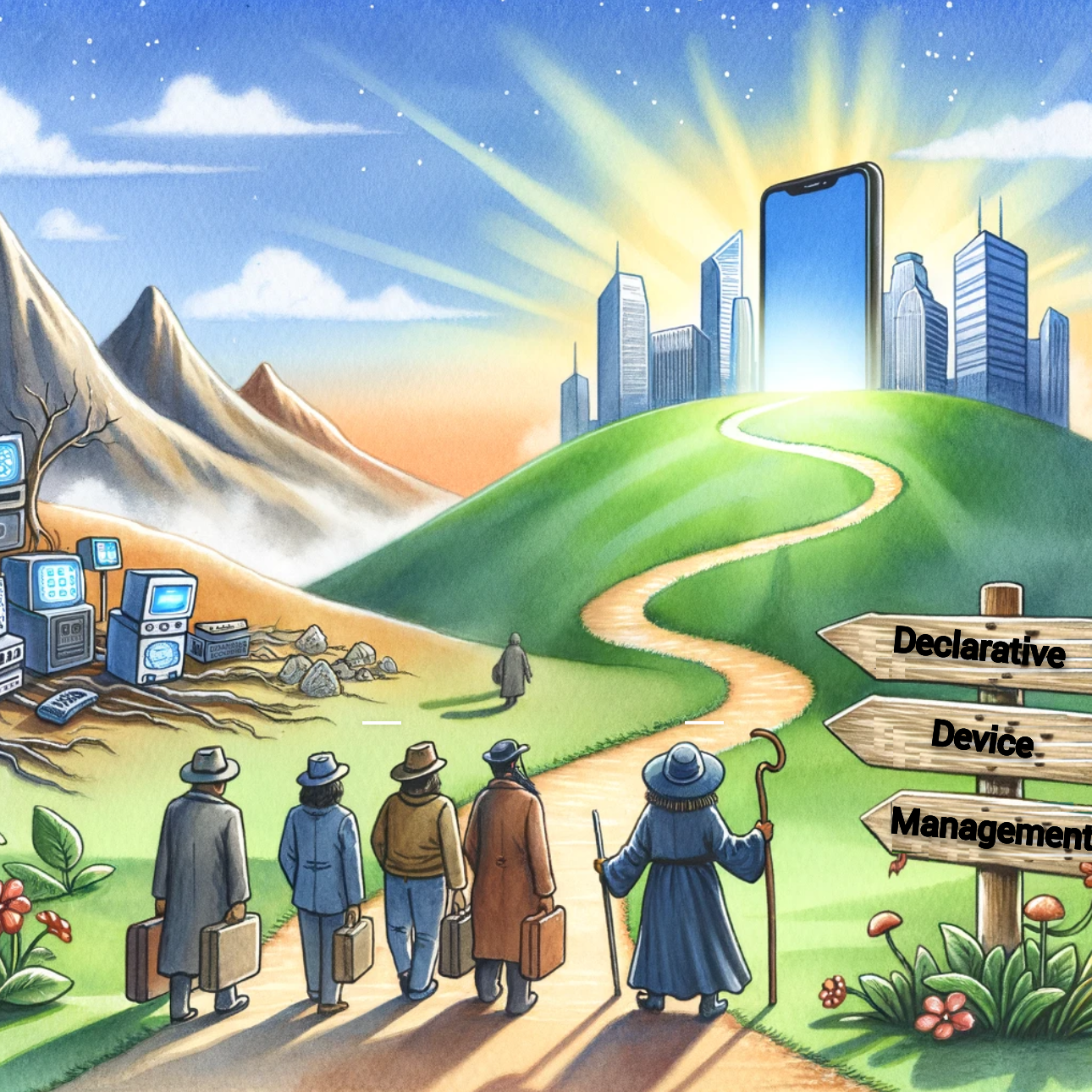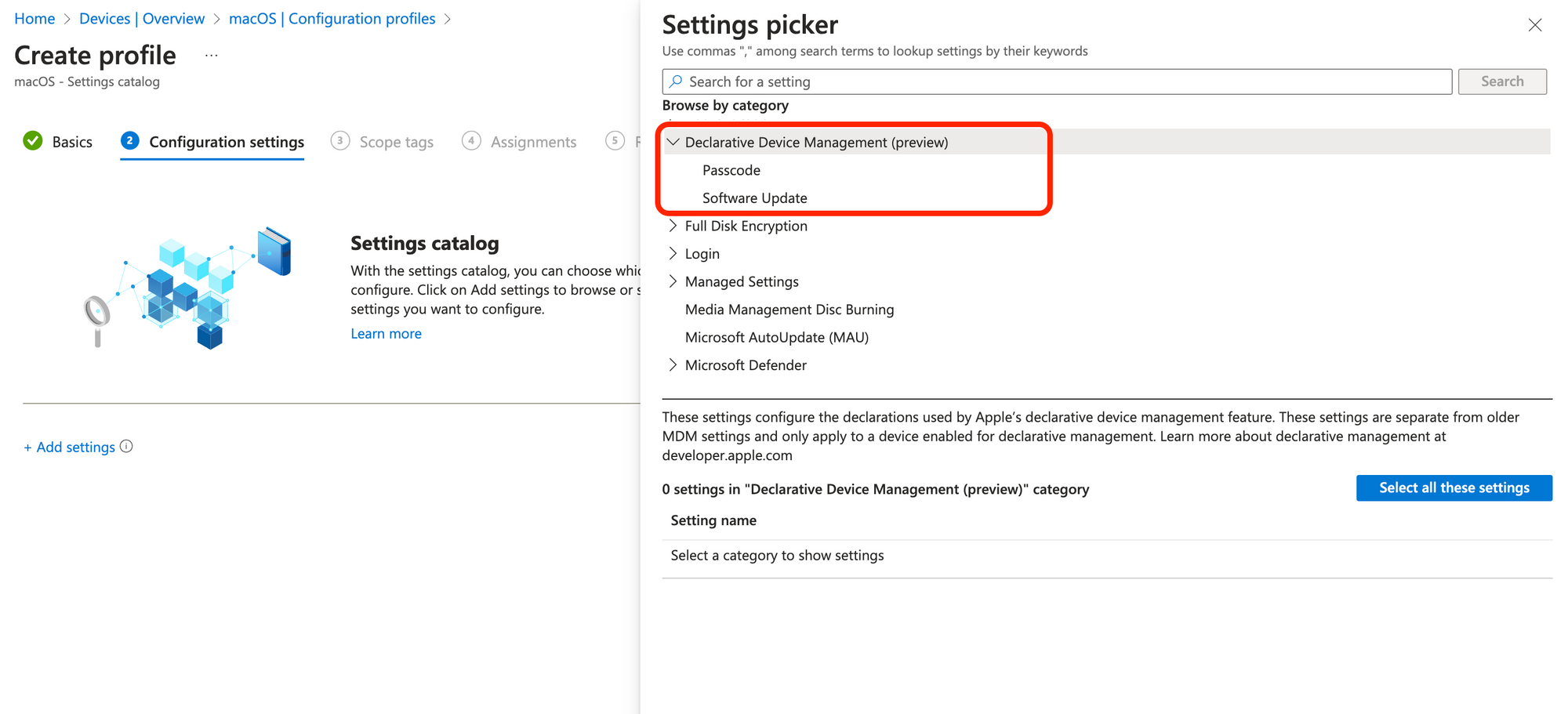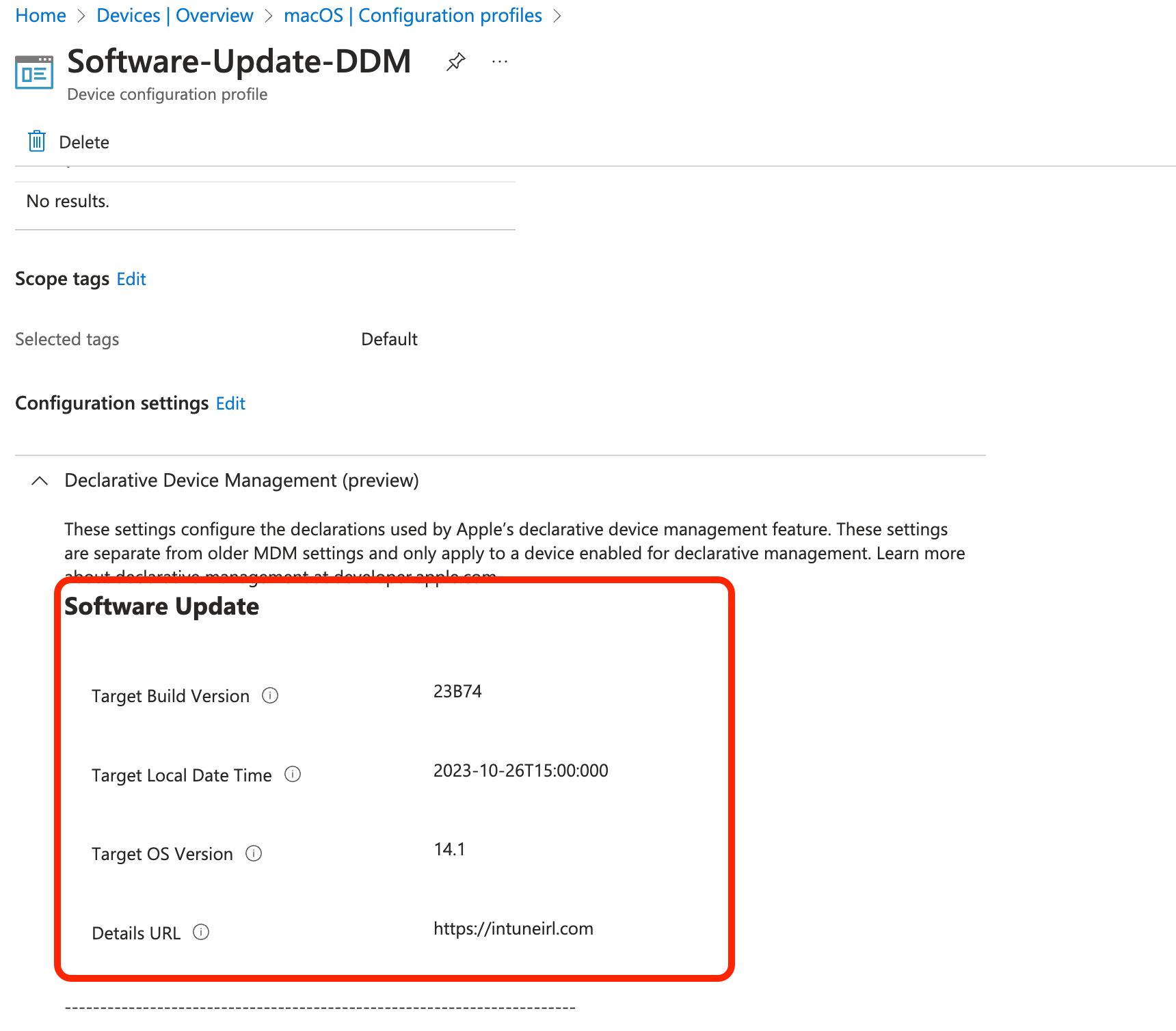Declarative Device Management (DDM) is a revolutionary approach to managing mobile devices that empowers them to be autonomous and proactive.

Declarative Device Management (DDM) is a revolutionary approach to managing mobile devices that empowers them to be autonomous and proactive. One of the key advantages of DDM is improved performance and scalability. By enabling devices to operate autonomously, devices can proactively perform tasks, make decisions, and adjust configurations based on predefined rules. This not only increases efficiency but also allows for faster response times, especially in large-scale deployments.
Another benefit of DDM is the reduced administrative burden it brings. With traditional device management approaches, administrators often have to manually configure each device individually or rely on scripts and profiles to enforce policies. This can be time-consuming and prone to errors. With DDM, administrators can define configurations once using a declarative data model, which is then applied automatically across all managed devices.
Security is another area where DDM shines. By leveraging predefined rules and configurations, DDM enhances security by ensuring devices adhere to established guidelines. Administrators can define policies related to password complexity, encryption requirements, app installation permissions, network access controls, and more. These policies are enforced automatically by the device itself without requiring constant monitoring or intervention from administrators.
In the following sections of this blog post, we will delve deeper into the components of DDM, its integration with MDM protocols, the requirements for implementing DDM, and how it enables automated software updates.
Declarative device management is an update to the existing protocol for device management that can be used in combination with the existing MDM protocol capabilities. It allows the device to asynchronously apply settings and report status back to the MDM solution without constant polling
With DDM, administrators define configurations once using the declarative data model, which is then applied automatically across all managed devices. Devices become more intelligent and self-sufficient, capable of adjusting their settings and behavior based on predefined rules. This level of autonomy allows devices to operate efficiently without requiring constant supervision or intervention from administrators.
DDM brings several benefits for IT professionals and Mobile Device Management administrators:
MDM (Mobile Device Management) protocols are used for managing and controlling mobile devices in an enterprise environment. These protocols provide a framework for communication between devices and management servers, enabling remote management and configuration.
MDM protocols facilitate various device management tasks, including:
Declarative Device Management (DDM) can be integrated with existing MDM protocols to enhance device management capabilities. By leveraging MDM protocols, DDM can communicate with management servers, receive updates, and synchronize configurations.
When DDM is integrated with MDM protocols, it enables a seamless flow of information between the managed device and the management server. The declarative data model defined in DDM provides a structured representation of how the device should behave. This model is communicated to the device through the MDM protocol, allowing the device to adjust its settings accordingly.

Declarations are a fundamental aspect of Apple Declarative Device Management. They serve as the building blocks that enable devices to apply logic autonomously. A declaration is a configuration item that specifies a desired state or behavior for a device. It can include settings, restrictions, or even custom actions.
The status channel plays a crucial role in facilitating communication between devices and the MDM server in Declarative Device Management. It serves as a bidirectional channel through which devices can report their current state and receive updates from the server.
When a device receives declarations from the MDM server, it periodically sends status updates to inform the server about its compliance with those declarations. This continuous feedback loop ensures that administrators have real-time visibility into device status and can take appropriate actions if deviations occur.
Extensibility is another key pillar of Declarative Device Management, offering flexibility and customization options for organizations. It allows for integration with other systems and services, enabling administrators to leverage existing infrastructure and workflows.
Before implementing Declarative Device Management (DDM), it is important to ensure that the devices being managed support the necessary hardware and software capabilities. Compatibility with the operating system, firmware, and management tools is essential for successful implementation.
DDM requires devices running iOS/iPadOS 15 & macOS 13 (minimum) . These operating systems introduce the necessary features and frameworks to enable autonomous decision-making based on predefined rules and configurations. It is crucial to verify that the devices in your organization meet these requirements before adopting DDM.
The flow below shows you when a device is already enrolled in MDM and you activate Declarative Management:

This flow shows you after your activation completes and a CheckIn request occurs:

In the next section of this blog post, we will explore how Declarative Device Management enables automated software updates on managed devices—improving security patching processes while ensuring optimal performance across the fleet.
Declarative Device Management (DDM) enables automated scheduling of software updates, ensuring that devices are always up to date with the latest patches and enhancements. By defining update policies and schedules, you can ensure timely and efficient software updates across their managed device fleet.
With DDM, you can establish rules within the declarative data model that govern how software updates should be handled on devices. These rules can include criteria such as update availability and scheduling preferences. Devices then autonomously check for available updates based on these predefined rules and apply them accordingly.
DDM employs three key principles to enhance the process of software updates, outperforming traditional MDM setups in this regard.
Firstly, in the realm of configurations, your MDM merely instructs the device on how to handle updates. The device itself executes these guidelines, while also notifying and empowering the user to initiate the updates at their convenience.
Secondly, predicates serve as the backbone for logical operations that dictate the sequence of software updates. This takes into account both seed builds and critical security patches that become available on the device.
Lastly, real-time status reporting ensures that administrators are promptly informed of any issues as they arise, allowing for immediate action.
Let's delve into how these mechanisms work in practice.

Some of the statuses that can be communicated include:
Now, let's examine what a typical status item entails:

Changes at user level:


20A242. yyyy-mm-ddThh:mm:sss format. 
Declarative Device Management (DDM) is a revolutionary approach that empowers mobile devices to operate autonomously and proactively. By allowing devices to make decisions based on predefined rules, DDM improves performance, scalability, and security.
With DDM, organizations can experience a range of advantages. Improved performance and scalability are achieved as devices operate independently and efficiently, reducing the need for constant supervision. This allows for faster response times in large-scale deployments and frees up valuable resources for other strategic initiatives.
Enhanced security and compliance are also key benefits of DDM. By enforcing predefined rules and configurations, organizations can ensure that devices adhere to established guidelines. Policies related to password complexity, encryption requirements, app installation permissions, network access controls, and more are automatically enforced by the device itself.
In conclusion, Declarative Device Management revolutionizes mobile device management practices by empowering devices to operate autonomously based on predefined rules.